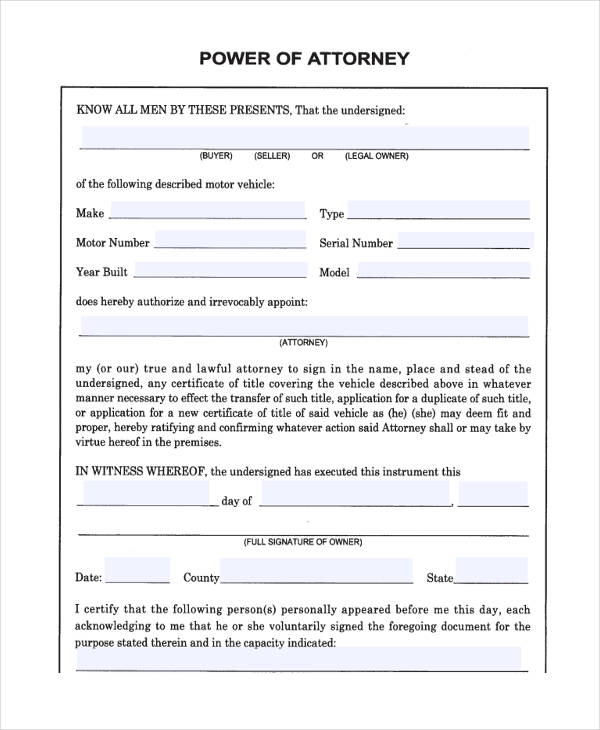5 Steps to Sign Title Paperwork with POA

Understanding how to sign title paperwork with Power of Attorney (POA) is crucial for both legal representatives and individuals who may need this authority in property transactions or other legal matters. Let's delve into the process in a clear and straightforward manner:
1. Identifying the Correct POA Document

Before any signatures are made, the first step involves identifying the appropriate POA document. This document should clearly outline the powers granted to you, the attorney-in-fact, and must be legally valid for the purpose at hand.
- Types of POA: General, Durable, Special, Medical, etc.
- Key Elements: The document must identify the principal, specify the agent, and the powers granted, with the principal’s notarized signature.
📝 Note: If the POA document is outdated or does not explicitly mention the power to sign title deeds, it might not be valid for this particular transaction.
2. Reviewing the Title Documents

Once you have the POA in hand, it’s time to review the title documents thoroughly. This ensures that all information matches and there are no discrepancies.
- Check the property description and ownership details to ensure they align with your POA.
- Look for any liens, encumbrances, or other details that need clarification before proceeding.
3. Signing the Title Documents

Signing as an attorney-in-fact under POA involves specific steps to ensure legal validity:
- Sign: Sign your name, followed by “/POA” or “as attorney-in-fact.”
- Acknowledgment: Include a notary public or other witnesses if necessary, depending on jurisdiction.
- Document Format: Use the following format for clarity:
Step Action 1 Print your full name 2 Sign under your name 3 Add “/POA” or “as attorney-in-fact” 
👀 Note: Always refer to state-specific requirements for the exact wording and formatting to use when signing as an attorney-in-fact.
4. Recording the POA

Although not always mandatory, recording the POA with the county or local authority is advisable:
- Provides legal proof of your authority.
- Protects against potential challenges or fraud.
5. Closing and Post-Transaction Activities

After signing, proceed to the closing, which involves:
- Providing all necessary documents to the title company or closing agent.
- Conducting a final review of all paperwork.
- Confirming that all parties involved acknowledge the POA.
Once the transaction is complete, maintaining records of all signed documents is important. These records could serve as evidence of the transaction should any future disputes arise.
Following these steps ensures that you, as an attorney-in-fact, navigate the process of signing title paperwork with POA smoothly and legally. Understanding and adhering to each step fosters a seamless experience, whether for selling, buying, or managing property.
What is a Power of Attorney (POA)?

+
A Power of Attorney is a legal document allowing someone to act on another’s behalf in legal or financial matters.
Can I sign a title deed for a family member using POA?

+
Yes, provided the POA document specifically grants the authority to sign real estate transactions.
What if the title deed does not match the POA document?

+
This could lead to legal complications. Ensure all details match or seek legal advice to update or confirm the POA.



